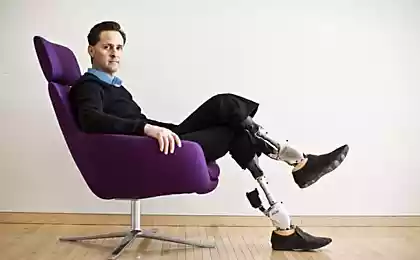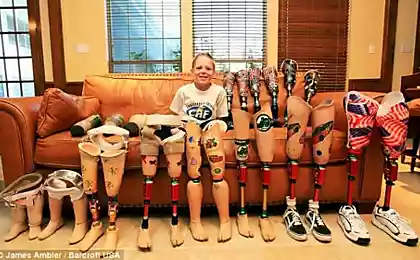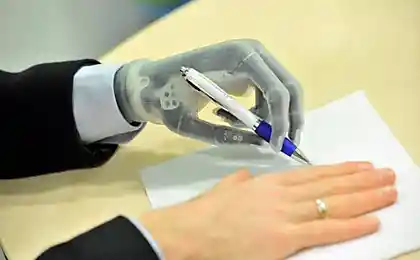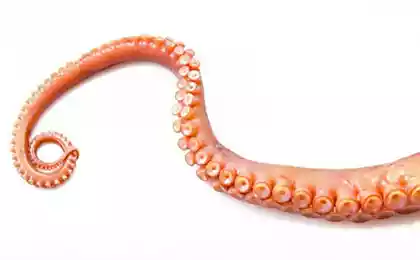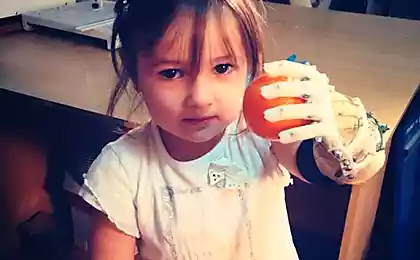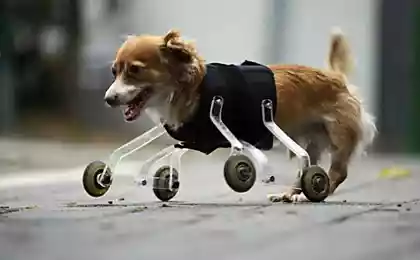855
Lost an arm woman was one of the most advanced bionic prosthesis in the world
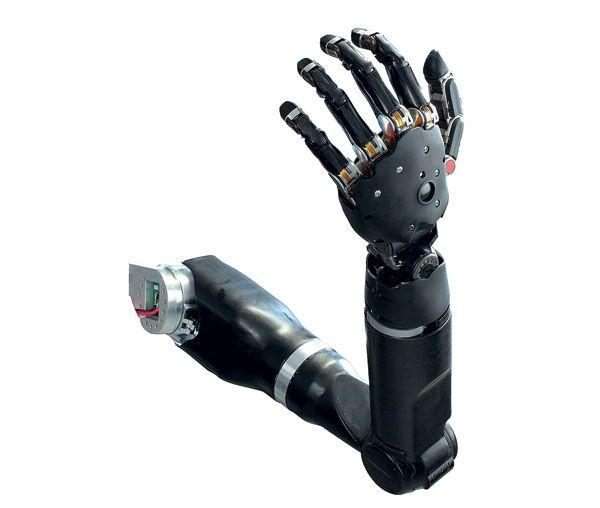
Loomis Melissa (Melissa Loomis), who lives in Canton (Ohio, USA), lost his hand in 2015. She was bitten by a raccoon, and although the damage was not too severe, the infection that gets into the wound led to a strong infection. Outbreak of infection was in the upper arm, which had to be amputated, because at stake was the life of the patient herself.
Now Melissa has a new limb. She feels his hand and four of the five fingers. In addition, it can move my right hand and perform the rotational movement of the wrist and fingers. Nevertheless, differences between the new and the old hands are very large. The fact that her new hand - artificial.
The American became a willing participant in the test bionic prosthesis a new type of hand almost immediately after the loss of his own limbs. To prosthesis can be controlled, physicians had to spend 16-hour operation, during which reinnervation shoulder muscles was performed, and restoration of sensitivity. This patient had an opportunity to control their prosthesis by thought.
Head of Project Network Ajay (Ajay Seth) believed that the first results will be seen after 4-8 months after surgery. But it happened much faster. Loomis began to feel his missing hand after only six weeks. When Dr. Seth asked her to imagine that she moves the wrist, doctors have seen that the shoulder muscles tense up and work the same way as it does when the wrist motion of the human hand.
After that the doctor drew a continuation of the hands of Loomis, showing where your fingers may be at the moment. And when he touched a painted finger Loomis felt his touch. In general, doctors are very long known about this phenomenon as "phantom limb". Many people who cut off an arm or leg, sometimes feel their limbs after many months or even years after the surgery. Some patients complain of "phantom pain" when unbearable pain, for example, missing a hand or foot is strongly scratched, cut off years ago. All this hurts patients and doctors in such cases, carry out operations on the nerve endings of the residue limb to save people from the false sensations.
If Loomis feel their missing limb was vital. Without it, she could never control the bionic prosthesis, created in the framework of the project Modular Prosthetic Limb, sponsored by DARPA. The prosthesis was created by experts at Johns Hopkins University.
Prosthesis itself consists of two parts. This transceiver is attached to the nerve endings and women shoulder prosthesis itself with the receiver signal. Once Loomis decides to move a limb, the receiver picks up signals in the nerve endings, decodes them and sends a prosthesis. Bionic prosthetic responds accordingly by activating one or other actuator systems. The result - an artificial hand moves. Plus, Loomis feels 4 of 5 fingers of his artificial hand and the very "hand", as mentioned above.
Creating a bionic prosthesis of this type - a difficult and expensive task. Dr. Seth had to hold a series of talks with representatives of various organizations, before DARPA agreed to start working with him.
This month, Loomis has tested his prosthesis for the first time, and it has achieved impressive success in the management of this system. In her shoulder found about 100 different contacts that connect the nerve endings to the transceiver and multiple temperature sensors. Unfortunately, the current prosthesis is not ideal, since before the creation of a full-fledged communication interface "man-machine" is still far away - it is a very difficult task. But experts managed to solve a lot of issues related to the connection of electronic and mechanical systems of the body chelvoeka and create a series of new structural solutions.
According to information posted on the website of the developer, a prosthesis is able to perform almost all the movements of the human hand.
MPL (Modular Prosthetic Limb) - a complex system. Now, in addition to Loomis, tested six other similar systems, and four are in the works.
Features prosthesis:
The anthropomorphic design and operation; Related to the human hand characteristics (mass, developed power, etc. it dry);. High precision - positioning, coverage of subjects; neurointerface management system; Ability to feel the structure of the object to which the prosthesis touches and the temperature of the subject.

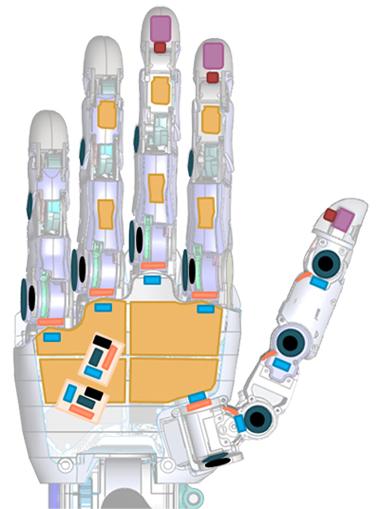
Color Sensor / Sensor Type Number 21 Position sensor touch sensor 10, rotation sensor 14 Temperature sensor 17 March-axis accelerometer 3 3-axis load sensor 3 Additional sensors
41 Basic requirements prosthesis following:
The anthropomorphic design; The reliability of systems fastening to the human body; Ability to produce copies of the prosthesis; < The optimum weight, comparable to the weight of the corresponding limb or part thereof; High energy efficiency; Serviceability; Support for sensors; Possibility of transfer of the surface structure of the information to which touches the prosthesis, feeling the vibration (if any), the surface temperature
Modular Prosthetic Limb - is one of the most advanced systems of this type. The fact that scientists were able to use every nerve in the shoulder, is responsible for the sense of touch. These nerves are connected to the prosthesis interface. MPL fingers are equipped with sensors of touch and temperature sensors. Contact prosthetic hand with two-way - that is, at the touch of the prosthesis to the subject of the woman can feel the touch and feel the surface of the structure, plus feel heat or cold
. "We are close to having to Loomis became the owner of the most technically advanced of the prosthesis in the country, and soon - and around the world", - says Seth. And it looks like it really is.
Source: geektimes.ru/post/279640/
Students fashioned glider for the Martian atmosphere
Starter Repair: fast, inexpensive and high quality

